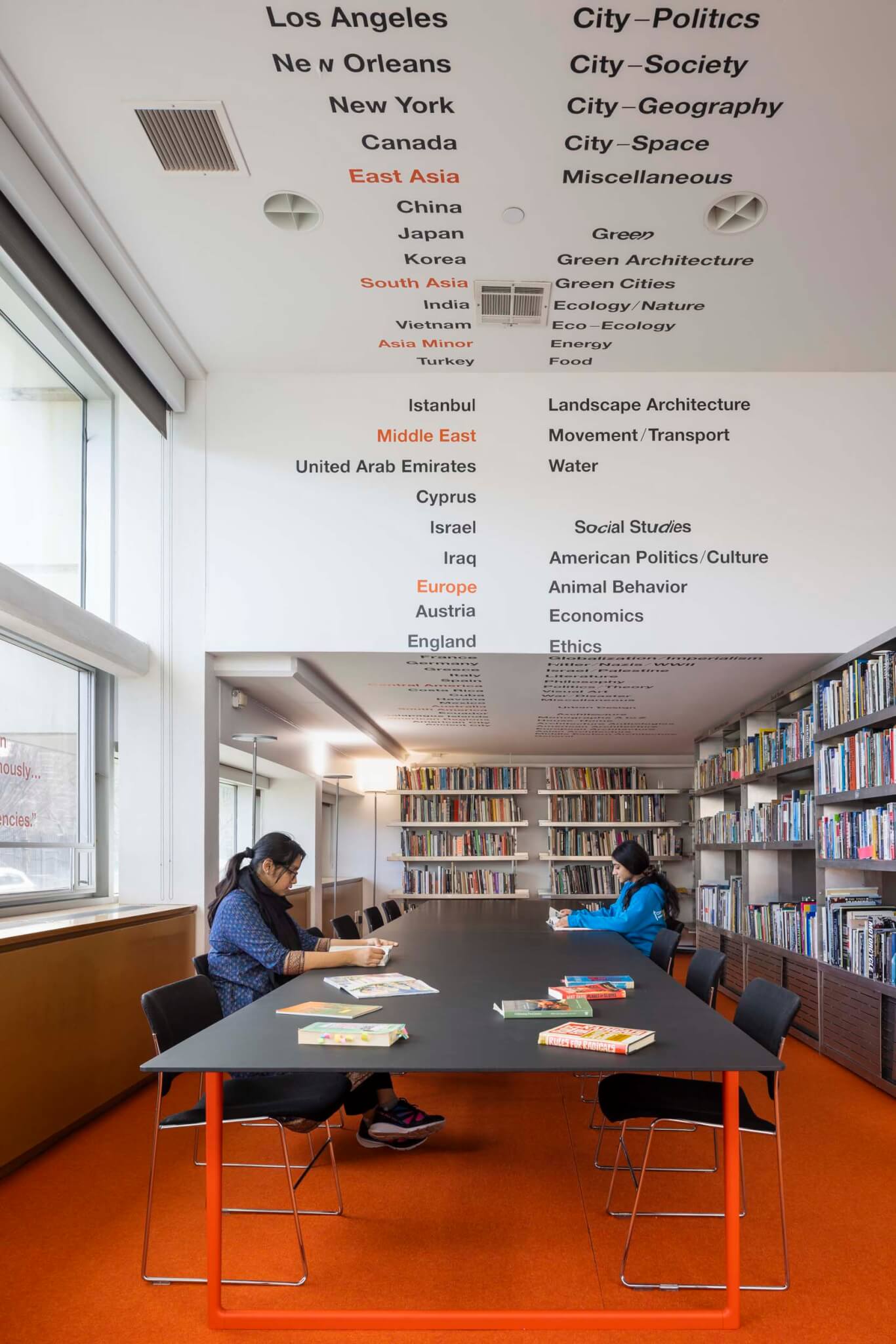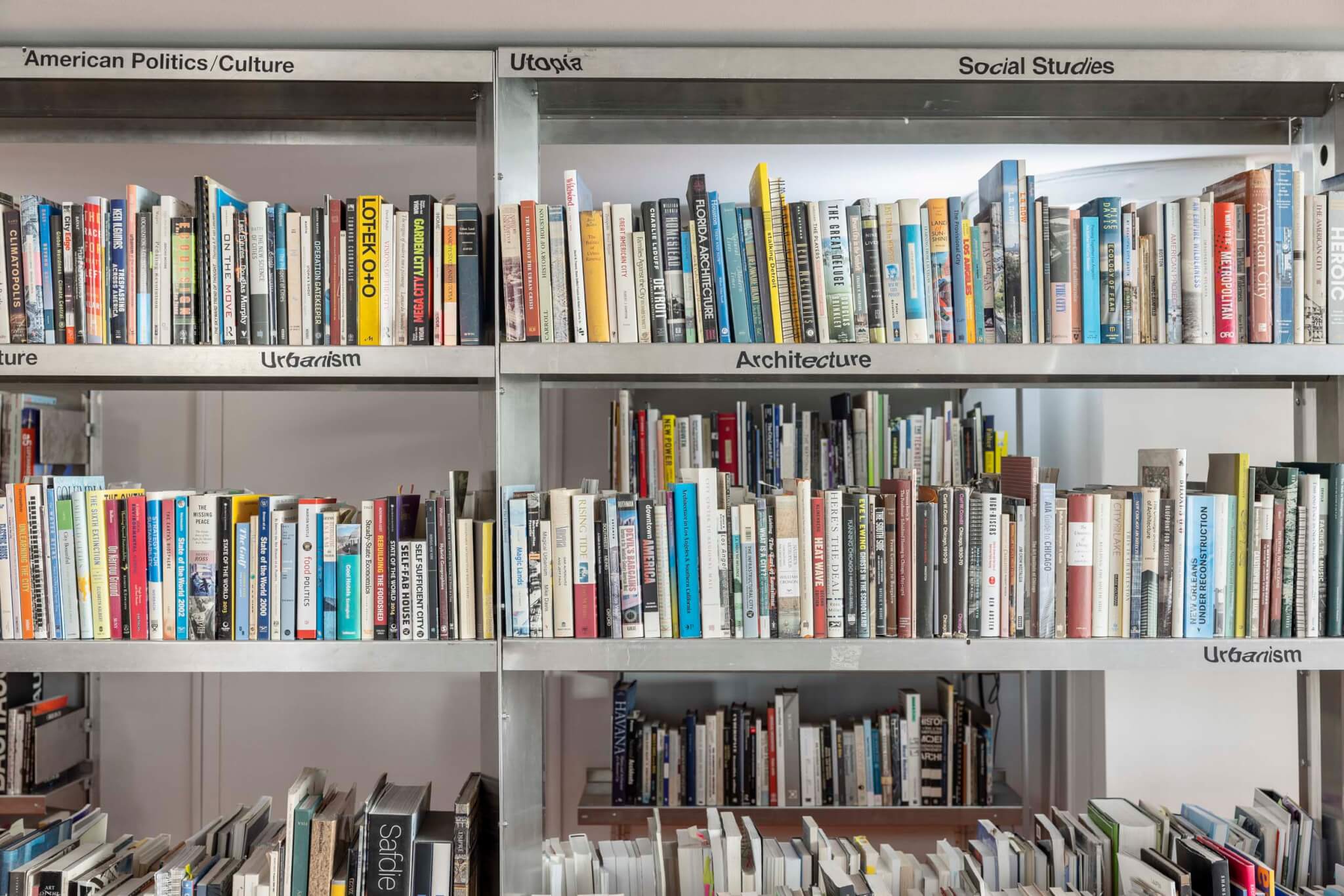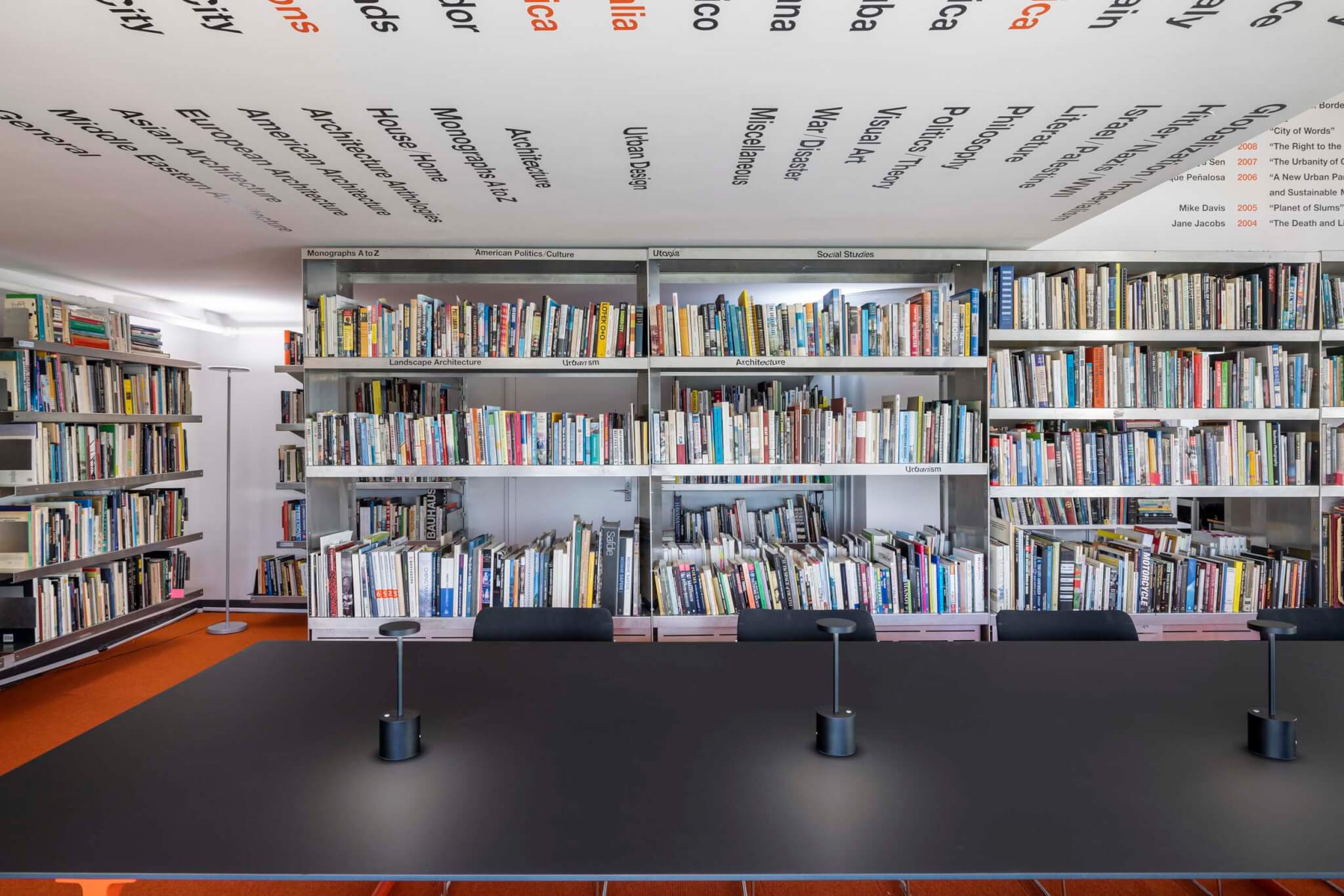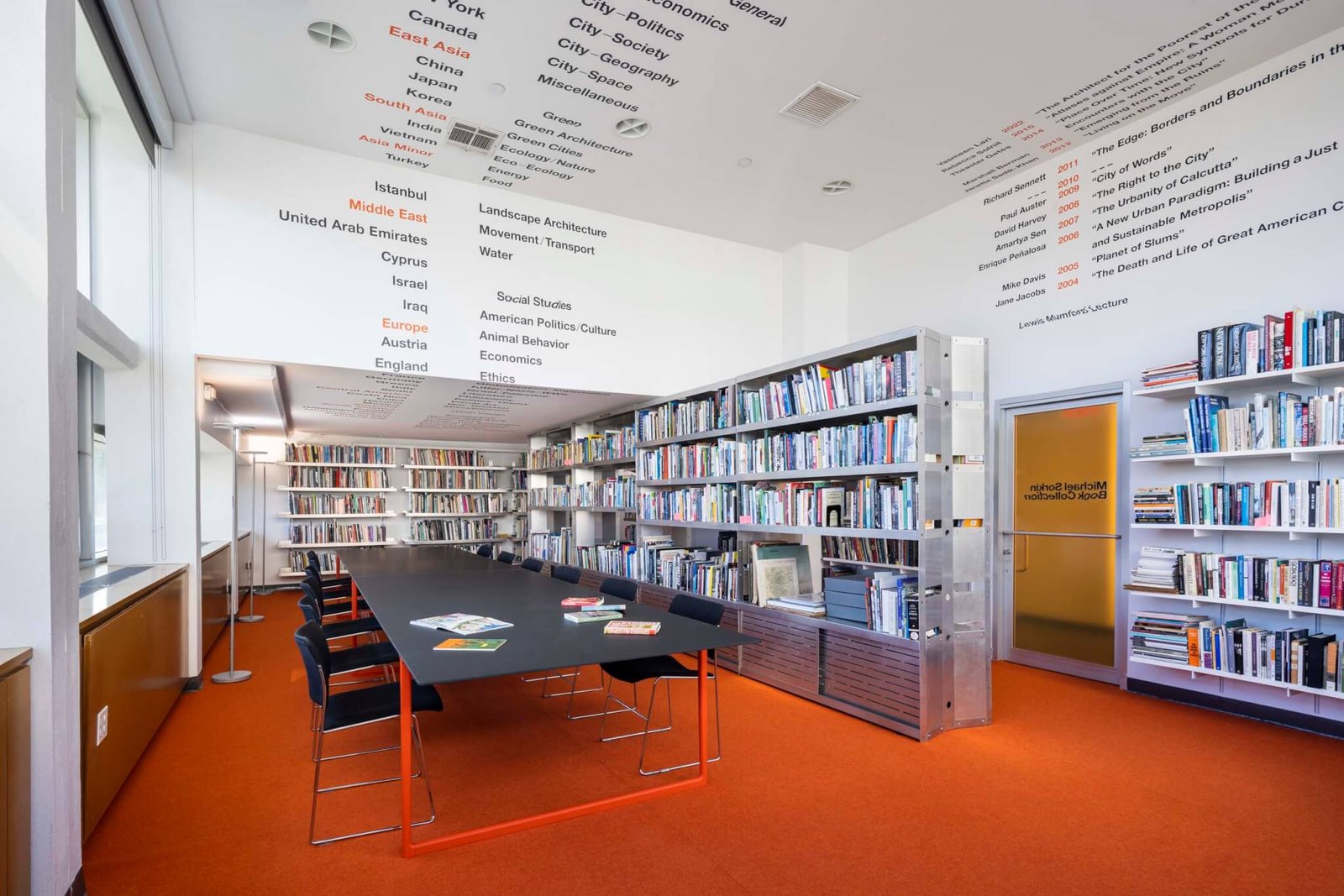The Spitzer School of Architecture preserves the library of Michael Sorkin Studio and Terreform Urban Research in the Sorkin Reading Room
Beyond the main library within the City College of New York’s Rafael Viñoly Architects–designed Spitzer School of Architecture building, a cobbled-together space composed of a former storage area and the visual resources room has become the Sorkin Reading Room. Windows overlooking the landscape have vinyl letters that read: “Fish are symmetrical but only until they wiggle. Our effort is to measure the space between the fish and the wiggle. This is the study of a lifetime.”
Designed by Elisabetta Terragni with red-carpeted floors and a long seminar table alongside KEEP bookshelves designed by Keller Easterling, the Sorkin Reading Room houses the book collection of architect, critic, urban theorist, and author Michael Sorkin, who died in late March 2020 due to COVID-19. Had he survived, the pandemic would be the type of crisis about which Sorkin would have much to say. Given the spatial, economic, and political dimensions of the crisis, which continues to impact us today, the milieu would have become material for a compelling argument about how to better organize social and political space.

The library embodies the thick history of this form of thinking. Terragni painstakingly documented the arrangement of the books in the studio to preserve their order. The shelves are stocked with an extensive collection of titles under headings like Utopia, Green Cities, Suburbia, Green Eco-Ecology, Globalism/Imperialism, and an international array of regional urbanisms. Terragni will eventually fully restore the studio’s books in the order Sorkin left them.
“I knew Michael very well in his work, but to go through all the books helped me to understand how these books were the tools for him to write and to think,” Terragni told AN. “If you flip through any of the books, you can find notes, letters. The work I did is just the beginning. Now they’re there to open up for research and studies, because there are a lot of clichés about Michael. He was a talented writer, he was an agitator, he was all of these things, but it’s high time to go deeper and to start to talk seriously about his work.”
Alongside the books is a stack of archival boxes labeled with Sorkin’s categories for scholars to use. On the walls, vinyl letters listing the categories recede into the space above the research table like scrolling film credits. Near the entrance, a smaller section of books organized by name were the only ones he stored in this manner: Authors include Henri Lefebvre, David Harvey, Marshall Berman, Mike Davis, Teddy Cruz, and Lebbeus Woods. Alongside the books, the collection includes 4,000 items such as syllabi, published writings, lectures, studio information, journals, catalogues, and bound files from selected architects. Sorkin would methodically print out all of his materials to ensure their preservation.

“Michael had labeled everything,” said film theorist Joan Copjec, Sorkin’s partner from the beginning of his nearly five decades in New York City. “He was very methodical. He had listservs with all this data, and so everyone understood that his system of putting the books together was the one that should be kept. He thought a lot about it. He was always putting things in categories, and they were all labeled on the shelf. He was he was very adamant that there be a record of everything.”
The preservation of Sorkin’s library, formerly housed in his Varick Street studio, was an administrative feat accomplished with speed and born of a determination to honor a respected and beloved colleague. His death set off an immediate crisis for Copjec, as the monthly rent of $10,000 for his Varick Street studio felt like a ticking time bomb. The space housed both his eponymous architecture studio and Terreform Urban Research, its nonprofit arm, which engaged in advocacy and competitions and published figures like Chinese landscape architect Kongjian Yu and Marxist humanist philosopher Marshall Berman, as well as books on subjects like a modernist shopping mall in Venezuela converted into a hellish prison, the Bush administration’s “extraordinary rendition” program, and spaces of uprising during the Arab Spring. Copjec’s lawyer advised her to move out as soon as possible.
Then-Dean Lesley Lokko was in close contact with Copjec to offer comfort and support. When Lokko heard of the plans to close the studio, she immediately offered space in the building to hold the materials until they could be acquisitioned. Eventually, Copjec moved his files to her brother’s place in Long Island City for easier access, but Sorkin’s colleagues persuaded her that they could preserve the books as one collection in Spitzer’s library. Because of a substantial pre-existing endowment controlled by the school, it could happen almost by decree. Current Dean Marta Gutman ultimately fulfilled the promise, and the Sorkin Reading Room opened last December.

“I knew that Michael wanted his books to be kept together,” Copjec said. “He didn’t want them to be distributed in various places, so I knew that this was the right thing to do. I was very happy when I heard that Elisabetta would be in charge of the design. That gave me confidence in the fact that the books would be kept together. Michael would be happy with this decision.”
In another stroke of misfortune converted into good luck, around the same time Spitzer announced the Sorkin Reading Room, Marshall Berman’s archives and books were also donated to the school’s library. Berman, who passed away in 2013 and also taught at City College, equally imbued his urban political thinking with a deeply personal sense of his experience of the city. The two collections will remain adjacent, with Berman’s books on a wall beside the Reading Room. “They’ll be neighbors again,” Gutman said. “They were intellectual neighbors, they supported each other, they taught in this program, and they’ll be back to back.”
Stephen Zacks is a journalist and project organizer based in New York City.

